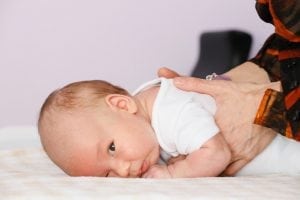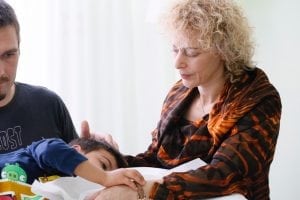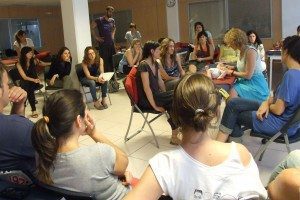 Osteopaths see a wide range of people , including pregnant women, babies and children, the elderly and elite athletes. Osteopathic treatment of babies, toddlers and older children forms part of standard osteopathic undergraduate UK training and is usually very gentle.
Osteopaths see a wide range of people , including pregnant women, babies and children, the elderly and elite athletes. Osteopathic treatment of babies, toddlers and older children forms part of standard osteopathic undergraduate UK training and is usually very gentle.
Some osteopaths work with patients with specific needs, such as those with disabilities, learning difficulties or in NHS premature baby units or paediatric clinics.
 One of the cornerstones of osteopathic principles is the belief that healthy balance of all parts of the body framework, including the cranial bones, is essential to whole body health. A further principle is that there is an intimate relationship between the structure and function of all the tissues within the body, and that if the structure is not balanced and healthy, then function may be affected.
One of the cornerstones of osteopathic principles is the belief that healthy balance of all parts of the body framework, including the cranial bones, is essential to whole body health. A further principle is that there is an intimate relationship between the structure and function of all the tissues within the body, and that if the structure is not balanced and healthy, then function may be affected.
A recent survey of cranial osteopaths found that some parents and patients directly seek this kind of treatment. In this survey, patients ages ranged between one week and 89 years old. 14.7% were under the age of two, of which 13% were babies.
When compared to the general osteopathic population, numbers of treatments and adverse reaction rates were similar. Adverse treatment reactions reported after cranial osteopathy were reported as appearing to be temporary and typically involved an exacerbation of symptoms such as pain or stiffness and fatigue.
 Many patients reported a significant reduction in symptom severity following an average of three treatments with cranial osteopathy.
Many patients reported a significant reduction in symptom severity following an average of three treatments with cranial osteopathy.
March 2015, Vol 18, Issue 1, Pages 13–21 Day-to-day practice of osteopaths using osteopathy in the cranial field, who are affiliated with the Sutherland Cranial College of Osteopathy (SCCO): A national survey by means of a standardised data collection tool J Wilkinson, K Thomas, J Freeman, B McKenna
 After taking a case history and performing a gentle structural examination, then your osteopath will suggest appropriate treatment(s) that you can consider.
After taking a case history and performing a gentle structural examination, then your osteopath will suggest appropriate treatment(s) that you can consider.
Osteopaths use a wide range of gentle hands on techniques and treatment varies between patients. Babies’ bones / body framework are softer than an adult’s, so I usually use gentle, subtle techniques such as cranial osteopathy when treating babies and young children.
Before you receive treatment we will jointly decide an appropriate and suitable treatment plan. If you have any concerns about the safety of treatment for your little one, we are happy to discuss these with you at any point.
Parents consult paediatric osteopaths for various reasons. Some parents bring their newborns ‘just for a check up’, others because they have been recommended. Osteopaths sometimes work alongside local health visitors, midwives, lactation consultants and will refer you to them if needed.
We may see a baby or child for 3 – 6 sessions or on an ongoing basis, depending on what that child needs.
I have done a considerable amount of post graduate training in osteopathy for babies, children, pregnant and post partum mums. After graduation in 1993, I began volunteering at the Osteopathic Centre for Children in London. In 2001, shortly after it became available, I completed my two year Diploma in Paediatric Osteopathy as well as having undertaken a number of other post graduate paediatric courses. My postgraduate training included supervised treatment of children with disabilities, learning difficulties and in an NHS premature baby unit. I regularly teach on a number of post graduate courses for osteopaths who undertake specific courses aimed at treating babies and children.
